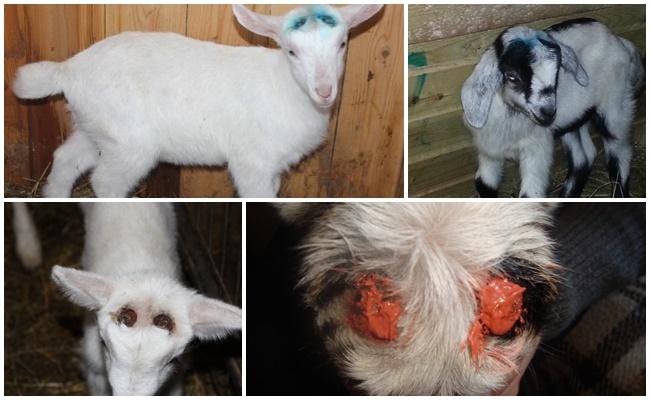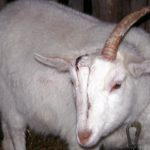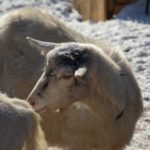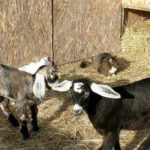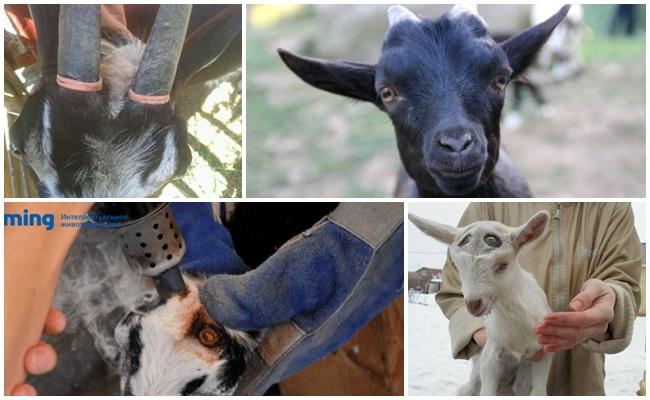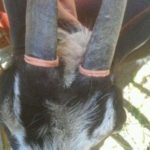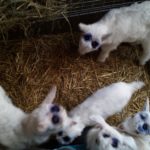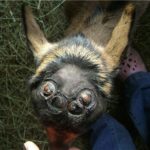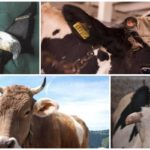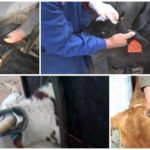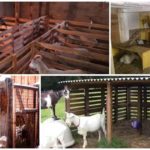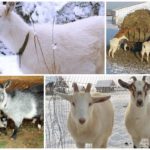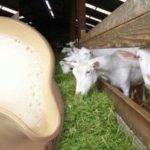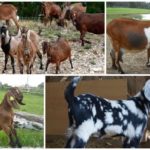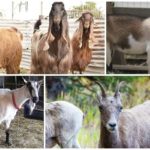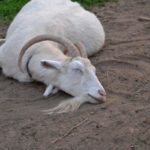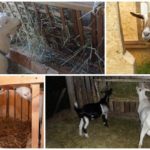Dehorning, or decornuation, is a special manipulation to remove and (or) prevent the growth of horns in young cattle or small ruminants. The main purpose of the operation is to protect people and other animals from injuries that horned individuals can cause to them. Dehorning of small goats is carried out in group keeping, to eliminate problems when caring for them and for sale to other farms.
Why delete?
The ancestors of wild goats had beautiful and powerful horns, which they needed for mating fights and protection from predators.In the process of domestication and selection, horns lost their original meaning; they even began to interfere with group keeping of animals.
In the process of breeding hornless, that is, polled breeds, breeders were faced with the problem of increasing the inferior offspring born from hornless goats. It turned out that it is much easier and more convenient to remove the horns when the kid is not yet more than one or two weeks old than to keep polled animals. The purpose of this procedure at such an early age is to:
- cause minimal harm to the animal;
- alleviate stress;
- ensure continued good growth.
It is advisable to carry out dehorning when keeping horned and polled goats together. The former try to dominate the latter and push them away when eating food. If adult animals are without horns, they will become calmer, their capabilities will be equalized, and everyone will get approximately the same amount of food.
What are the methods?
All over the world, the most popular decoration of goat kids is the use of special horn burners. Dehorning at high temperatures is carried out using a thermocautery device. Two types of burners are used:
- Gas. They are convenient where there is no electricity. The devices require preliminary testing on a wooden block. After heating, they are applied to the tree. Black circles that appear on the block indicate readiness for work.
- Electrical. They are more secure. The readiness time for use after plugging in is indicated in the instructions.
If you need to remove the horns of older individuals, this must be done using tight elastic bands.They can be purchased at veterinary pharmacies or picked up at a car or hardware store. The product should be round and half the diameter of the horn. Rubber bands can be used to remove horns in cases where they continue to grow after the first removal or when the grown animal is preparing for sale. When using this method, the horns fall off on their own after 45-70 days.
In some cases, goat owners stop the growth of horns with special pastes based on strong alkalis:
- "Doctor Naylor";
- "Antihorn";
- Hornex.
After applying the mixture to the horn, its tissues soften and die. It is advisable to carry out the treatment from 3 to 8 days after birth, and do this in accordance with the instructions.
Preparation for the process
Before the dehorning procedure, you need to examine the animal and make sure it is completely healthy. After this, you need to make sure that the kid has the rudiments of horns, and was not born polled. To do this, apply a finger to the location of the horny tubercle. Lightly press on it and make a circular motion. If the skin under the finger moves or it is not possible to feel the tubercle at all, then the kid was born hornless. In horned individuals, the skin under the finger will remain motionless.
When preparing for the process of dehorning goat kids, you need to take care of methods for restraining the animal. To do this, you will either need an assistant, or a small narrow box with a hole for the head will do. If you have no experience in carrying out dehorning procedures, then it is advisable to invite an experienced goat owner for the first time.
How to dehorn goats at home?
If you have a thermal cautery, the procedure for decorating goats can be carried out at home. To do this you need:
- check your health status;
- shave or cut hair in the area of the tubercles within a radius of 20 mm;
- feel the tubercles with your fingers;
- turn on the device in advance;
- place the animal in a box or secure it in another way;
- tightly apply the thermal cautery to the tubercle;
- wait 10 seconds and remove it;
- let the cauterization site cool and repeat the procedure several more times until a white or light yellow ring appears at the site of the tubercle;
- carry out the procedure on the second tubercle;
- treat the head in the cauterized areas with an anesthetic aerosol.
The rudiments of the horns fall off about a month after cauterization. An adult goat can be dehorned using rubber bands. This is done as follows:
- shave the hair around the horns;
- with the help of an assistant, fix the animal and its head;
- pull the elastic band over the base of the horn;
- Regularly, when bleeding wounds appear, treat them with an antiseptic;
- if necessary, after a few weeks, cut off the elastic from the horn and put on a new one;
- after about two months the horns break off.
This procedure is quite unpleasant and even painful for animals. Horns are supplied with blood; their contraction can negatively affect the health and productivity of animals.
It is advisable to carry out dehorning with rubber bands in the fall, when there are no flies and other insects outside that are attracted to blood.
Caring for a goat after dehorning
Immediately after the procedure, the animal must be calmed, stroked and spoken to gently. If possible, it is advisable to keep the goat separately from the rest of the herd for several days. Monitor wounds and, if necessary, treat wound surfaces with an antiseptic. Sometimes antibiotics are prescribed.
To avoid weight loss after stress suffered during manipulation, you will need to change your pet's diet.It should include:
- green dried grass;
- quality hay;
- vegetables fruits;
- corn;
- compound feed;
- silage.
The animal must be provided with clean water, mineral supplements, salt, and premixes. If dehorning is carried out correctly, then re-dehorning is not required.

